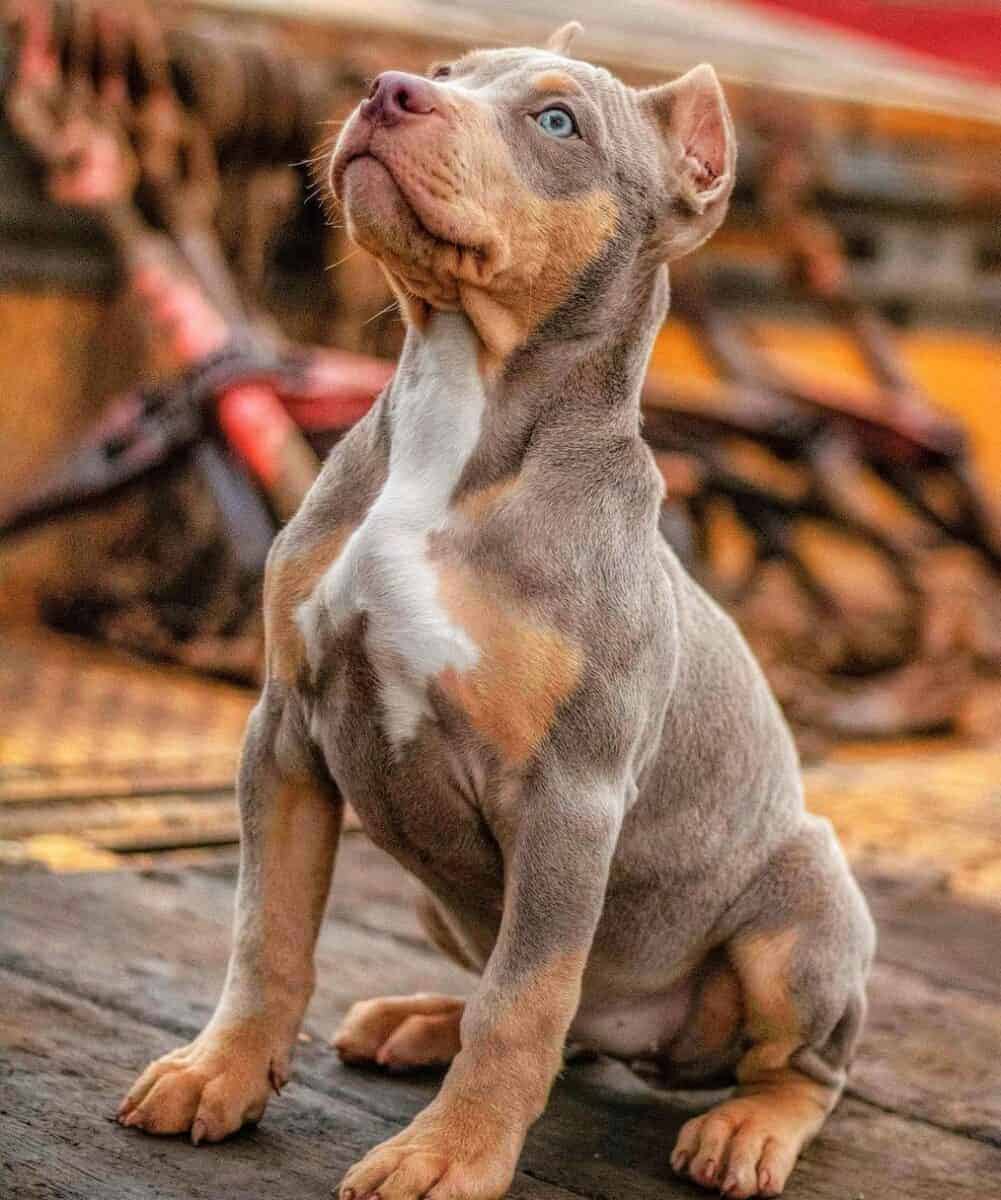

/AmericanStaffordshireTerrier-GettyImages-930740994-7d8a39011d0b41958d7bb02a44e899e5.jpg)
Having it in several generations doesn’t mean anything when it’s a recessive gene. You don’t have to understand the fancy words (I don’t understand or care what an allele is) but you now know the tri color gene is recessive, which means you need both parents to be carriers in order to produce tri color pitbulls.Īlso don’t get fooled into the hype of the tri color gene being stronger because several generations were tri colors. The exact coloration that is produced by the tan-point gene is dependent on the color genes present at other loci, for instance if the pigmentation is black, the result will be a black & tan, but if the dog’s pigmentation is chocolate or blue then the pattern would produce a chocolate & tan or a blue & tan, respectively. These ‘points’ always appear in specific places but the actual size and distribution of them is somewhat variable. The tan point gene does not actually create a black & tan animal, the gene itself does not produce any color but rather a pattern of a solid color with light-colored ‘points’. If in fact the black and tan color was not present in the APBT gene pool, you would have to breed to a dog of another tan-point breed, and then breed two offspring from such a breeding back together to get black & tan dogs, in the first generation you would get no tan-pointed offspring. The latter reason shows an ignorance of basic genetic principles, because the gene is recessive, there is no way you could breed a Rottweiler or a Doberman or Manchester Terrier to a Pit Bull and get puppies with the tan-point markings unless the Pit Bull was carrying the tan- point gene too. Actually, part of the reason the color is uncommon is that there has been a distinct prejudice against it by many people, either because they feel it is not a typical Pit Bull color, or even actually thought it was the result of a mixed breeding. Though it is impossible to say for sure where the coloration originated, our best guess would be that it came from some sort of terrier blood that was introduced many, many years ago, probably during the early formation of the breed in the British Isles. In the case of our breed (where this is not a common color) this is what often happens, but it is important to realize that when the tan-point pattern does pop up it is not some new color mutation that appeared out of nowhere, but rather the manifestation of a gene that has been present in this breed all throughout the known history of the American Pit Bull Terrier. because of the recessive nature of the tan-point gene, it can actually remain hidden in the gene pool for many generations without expressing itself. If the dog inherits one copy of the tan-point gene and one of the dominant black, blue, or tan gene, the result will be a solid black blue, tan dog. If a pup inherits one copy of the gene and one copy of the dominant yellow gene, which causes a red or buckskin coloration, then the dog will be red or buckskin, not tri colored. There are also a couple of other genes on this same locus, but they are most likely not present in this breed, so we will ignore them in this article to try and keep things simple.Ī Dominant Black: produces a solid color (ie: black, chocolate or blue)Īy Dominant Yellow– Produces reds and buckskinsĪt Tan-Point (recessive)– produces solid color with tan ‘points’Ī dog needs to inherit two copies of the tan-point gene to be a tri colored.
#Tri color american pitbull terrier series
The tan point pattern is caused by a recessive gene on the Agouti series gene locus, the following are the alleles (variations) that are definitely known to occur in the American Pit Bull Terrier.

This applies to the American Bully even though the American Bully stems off from the pit bull but has also been influenced by the infusion of several different types of bulldog breeds according to both the UKC & ABKC. Below is an article about tri color pit bulls credited to – Ed Faron


 0 kommentar(er)
0 kommentar(er)
